| Law | Symbolic Representation | Definition |
|---|---|---|
| Commutative Law | The order of applying the operation does not affect the result. | |
| Associative Law | The grouping of operands does not affect the result. | |
| Closure Law | The result of applying the operation to two elements from a set is still an element of that set. |
a)Closure
Supplementary angles: whose sum is 180(degree)

- ratio of area of ABC to DEF= 1/4
- perimeter of ABC to DEF = 1/2
- measure of angles of DEF= 60º
- all triangles are congruent
- ratio of length of AC to DE = 1/2
- CDEF forms a rhombus
Part 1
1: Number System -+
; ;
a)
- when solving
you can make it simpler by doing
a)
m
-
Modulus or Absolute value=
= -
argument =
-
theorem for complex numbers also called polar forms are:
- De-moivre's:
- Euler formula:
- De-moivre's:
-
polar co-ordinates of a point
-
-
-
a)
- multiplication of complex numbers
-
field of rational numbers
is field of complex numbers -
-
Inverse of
is:
MCQ -
Multiplicative Inverse: when multiplied turns the number into 1
Additive Inverse: When added turns the number into 0
a)0
a)(3, 0)
2: Sets and Sub-Sets -+
- Power of a Set = No. of subsets =
- Absorption Law:
-
\hline
& & \text{ AND } & \text{ OR } & \text{ NOT } & \text{ 2nd should not be false while first is true } & XOR \
\hline
P & Q & P \land Q \text{ (Conjunction)} & P \lor Q \text{ (Disjunction)} & \neg P \text{ (Negation)} & P \rightarrow Q \text{ (Implication)} & P \leftrightarrow Q \text{ (Biconditional)} \
\hline
\text{True} & \text{True} & \text{True} & \text{True} & \text{False} & \text{True} & \text{True} \
\text{True} & \text{False} & \text{False} & \text{True} & \text{False} & \text{False} & \text{False} \
\text{False} & \text{True} & \text{False} & \text{True} & \text{True} & \text{True} & \text{False} \
\text{False} & \text{False} & \text{False} & \text{False} & \text{True} & \text{True} & \text{True} \
\hline
\end{array}$$
-
A\B = A-B; A
= U-A -
-
there is only one inverse for each element in a set/group
| Converse | ||
| Inverse | ||
| Contra positive |
- if function's elements are in sets of ordered pairs swapping their position is the function's inverse
- Groupoid: if elements are closed with respect to an operator(closure property)
Semi Group: groupoid but order when applying operator doesn't affect the result(associative property)- order of a group is its number of elements
| Name | Notation | Definition |
|---|---|---|
| Subset | A ⊆ B | all elements of A are in B |
| Superset | B ⊃ A | B has every element of A(basically A is subset of B) |
- if A is a set, |A| represents the number of elements in A
3: Matrices -+
- Minor
: determinant of matrix after removing row and column - Co factor
- Symmetric:
Skew-Symmetric - Order: Row x Column
for all square matrices where is the order of the matrix - if a whole row/column is zero, determinant is zero
if a two whole rows or columns are equal then determinant is zero if - if A is diagonal matrix, then its inverse is reciprocal of its elements i.e
- if A is diagonal then its determinant |A| is simple product of diagonal elements.i.e
- solve determinant of
or higher using determinant properties
a)6
4: Quadratic Equations
- Fourth roots of 16 are:
- sum of fourth roots is zero
- A quadratic has a degree of 2, always
- if
is root of polynomial equation then is zero
a)1
- at the point of intersection of two rays their functions are equal.
- for
whose roots are then $$\begin{align*} S = \alpha + \beta &= -\dfrac{b}{a} \ P = \alpha \times \beta &= \dfrac{c}{a} \ \ ax^2 + bx + c &= x^2 - Sx + P \end{align*}$$
a)
since
- In a homogeneous system, if the determinant of the coefficient matrix is non-zero, the system only has trivial solution (i.e.
a)Trivial Solution
since $$ \begin{align}
\begin{vmatrix}
{{3}} & {{2}} \
{{1}} & {{2}}
\end{vmatrix} = & \ 6 -4= 4 \ 4 & \neq 0
\end
\begin{array}{|c|c|c|c|c|}
\hline
\textbf{Type} & \textbf{General Term} & \textbf{Sum} & \textbf{Mean} & \textbf{Example} \
\hline
\text{A.P.} & a_n = a + (n-1)d & S_n = \dfrac{n}{2}[2a_{1} + (n-1)d] = \dfrac{n}{2}(a_{1} + a_n) & \text{A.M} = \dfrac{a + b}{2} & 2, 5, 8 \
\hline
\text{G.P.} & a_n = ar^{n-1} & S_n = \dfrac{a_{1}(1 - r^n)}{1 - r} , \text{for} , r < 1, , \text{or} , S_n = \dfrac{a_{1}(r^n - 1)}{r - 1} , \text{for} , r> 1 & \text{G.M} = \sqrt{ab} & 3, 6, 12 \
\hline
\text{H.P.} & a_n = \dfrac{1}{a + (n-1)d} & S_n = \dfrac{n}{\dfrac{1}{a_1} + \dfrac{1}{a_2} + \dots + \dfrac{1}{a_n}} & \text{H.M} = \dfrac{2ab}{a+B} & 1, \dfrac{1}{2}, \dfrac{1}{3} \
\hline
\end
- for two terms in GP
and
e.g.
- find any
if from any with
e.g.
a) 1536
- term of GP remain in GP even after reciprocal
7: Permutation and Combination +
- permutation: different arrangements of n numbers taken r at a time
Combination: selection of r objects from a total of n objects, where the order of selection does not matter.
- if in combination or permutation q* objects are always included:
or if never included or
- if some object in permutation is being repeated say
times e.g. A,B,B,C,C,C,D (B is repeated 2 times and C 3 times so) then its permutation taking 5 at a time is
a)72
and
a)360
also try for corporation , note that
a)5
since divisible by 5, 5 is fixed at the end, no digits repeat so
a)320
a)242
less than a lakh has 5 digits, each digit can be replaced by 3 possible numbers so
excluding 00000, so 243-1=242
-
Diagonals in an
sided polygon: -
circular permutation =
circular permutation on a flipable ring = -
common factorials
| 0! | 1! | 2! | 3! | 4! | 5! | 6! | 7! |
|---|---|---|---|---|---|---|---|
| 1 | 1 | 2 | 6 | 24 | 120 | 720 | 5040 |
- in permutation order of elements matters while in combination only the presence of an elements matters
- how to determine whether the question requires permutation or combinations
Combination:
a)5
- for consecutive
's with same n: keeping the larger
a)Both B and C
solution:
and using above given rule, 8 is higher so we
a)none
are equal for all n and m, if as
Geometrical problems
- if n is the number of non-collinear points
a)28
a)40
| Pecrmutation | Combinations |
|---|---|
| Arrangements standing or sitting in row or in a circle problem regarding digits letters(A,B,C...) Formation of words, number,etc |
Selection, Choice, Draw,etc Distributation, formation of a group, commitee, team,etc problem regarding geometry |
Probability:
- Rules of probability:
- Probability of an event =
- Probability of an event =
a)
- blueeeeh:
- probability can never be greater than 1
- Improbability of an event =
a)
Total outcomes:
| Die | 1 | 2 | 3 | 4 | 5 | 6 |
|---|---|---|---|---|---|---|
| 1 | 2 | 3 | 4 | 5 | 6 | 7 |
| 2 | 3 | 4 | 5 | 6 | 7 | 8 |
| 3 | 4 | 5 | 6 | 7 | 8 | 9 |
| 4 | 5 | 6 | 7 | 8 | 9 | 10 |
| 5 | 6 | 7 | 8 | 9 | 10 | 11 |
| 6 | 7 | 8 | 9 | 10 | 11 | 12 |
a)
- Card in a deck:
- Spades, Hearts, Diamonds, Clubs:
- Black Cards: 26, Red Cards: 26
- Face Cards:
- All Hearts and Diamonds are Red
- All Spades and Clubs are Black
- Spades, Hearts, Diamonds, Clubs:
a)
Red card Prob:
- 1/2 Probability of even and odd sum from one or multiple dice rolls
- possible outcomes of an experiment with
outcomes performed times: , then probability is - Possible outcomes of a coin tossed
times: - Possible outcomes of a dice rolled
times:
- Possible outcomes of a coin tossed
a)
a)
Total outcomes:
- probability of an
- dependent events:
a work is to be and involves 3 steps, step 1 has probability of completion 0.7, step 2 has probability of completion 0.8, step 3 has probability of completion 0.9, total probability of work being done is?
simply multiply them
8: Mathematical Induction and Binomial Theorem
Mathematical Induction
- Use back solving method
a)
since n is a natural number, using 2 and adding only first two numbers (1+2) = 3, now put n=2 in each option and whichever equal 3 is correct
a)7
a)
since
Binomial Theorem
where
a)
since there are alternating minus sign, A contain a minus, and 2nd term is 8x, which is n(
- number of terms is
a)5
first make it binomial and it becomes
-
Middle term if n is even:
position -
if n is odd:
position -
Sum of binomial co-efficient:
-
Sum of even or odd binomial co-efficient:
a)7
since
- Find Sum of co-efficient
of by replacing by 1 and solving
a)32
- Sum of exponent of
and in each term is equal to
a)
term or power of b:
a)
b) c) d)
8th term so r=7, since all coefficient same in option, don't need to calculate
- if asked to find Xth terms from last, simply exchange
and :
a)
this time we calculate the combination,
- Term involving Cth power of x as
in an equation of form : we get value of r by doing where t is the combined degree of and here its 2 it is simply nth position, if has a degree of 1 - term independent of
means , where c=0
a)
here
9-14: Trigonometry
9: Fundamentals of Trigonometry
| System | units | conversion | definition |
|---|---|---|---|
| sexagesimal | 1 degree is the angle, the 360th part of a circle subtends on the centre | ||
| circular | rad. | the angle subtended by an arc equal in length to radius |
-
basic unit of angle is second (60th part of a minute and 3600th part of a degree
-
Calculate angle between clock hands:
a) 275
275 is in 4th quad so (360-275) = 85 so both
| Polygon | Area | Perimeter | arc |
|---|---|---|---|
| Circle | |||
| Sector | |||
| Triangle | |||
|  |
| co-ratios | Identity | addition | double angle | triple angle | half angle | |
|---|---|---|---|---|---|---|
| Sin |
Cos |
|||||
| Cos |
Sin |
|||||
| Tan |
Cot |
irrelevant | irrelevant | |||
| Sec |
Cosec |
|||||
- if sum of two angles is 90 then those co ratios are equal
a)Cot 42
a)0
a)
simplify put t=90 and compare answers with each option
a)0.2
a)2
- for a right angled triangle
since 71+19= 90, so tan 71 = Cot(90 - 71) = Cot 19
and tan 45 and cot 45 both equal to one
- Allied angle concept: if
ifis odd, then the function applied on is converted to it co-ratio with angle , otherwise remains same
if the function atis negative, then has a negative sign
e.g.since is negative in 2nd quad - for a right angled triangle
| product to sum/diff | Sum/diff to product | |
|---|---|---|
| sin | ||
| cos | ||
| function | |||||
|---|---|---|---|---|---|
| 1 | |||||
| 0 | |||||
| 0 | 1 | undefined |
10: Trigonometric Identities
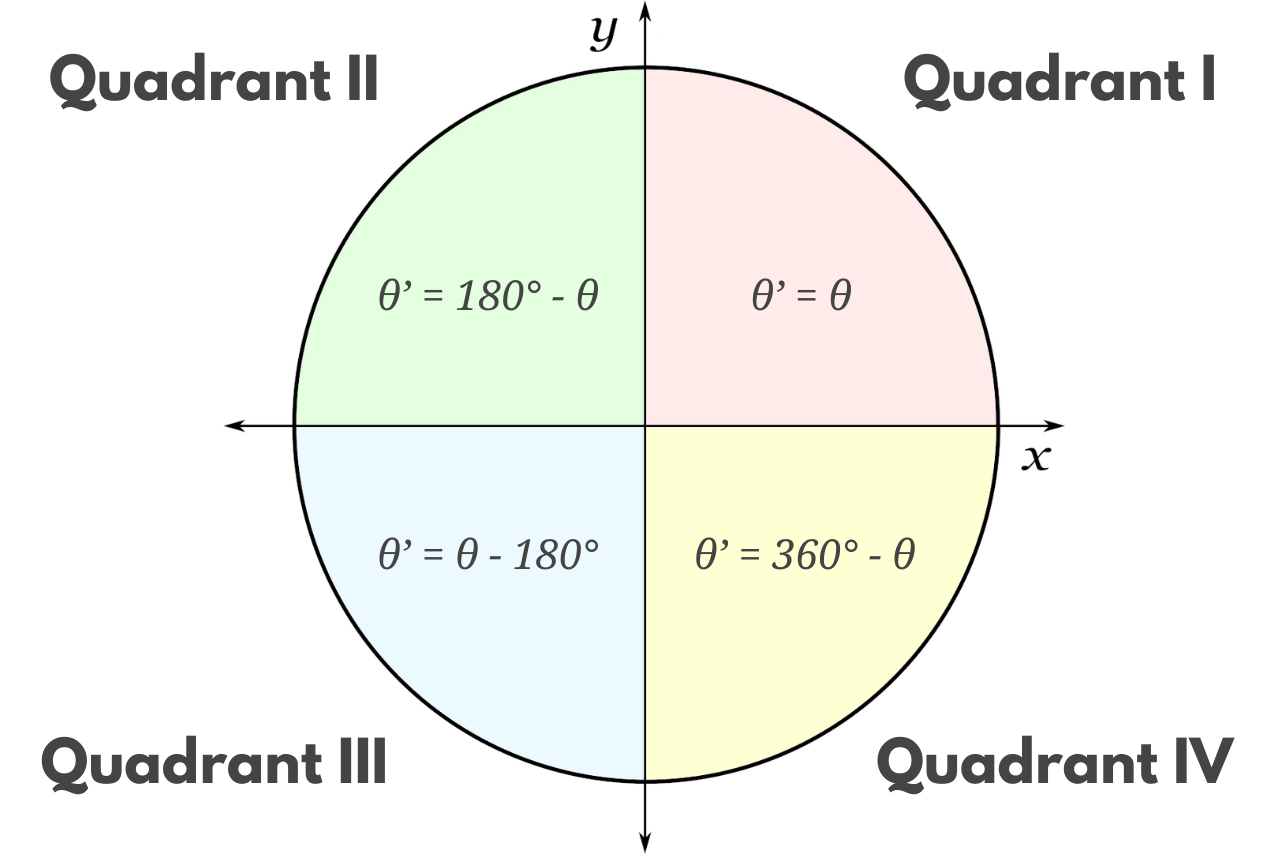
11:
| func | period formula |
|---|---|
| sin(ax) | period = |
| cos(ax) | period = |
| tan(ax) | period = |
ANS:
-
a: determines amplitude
b: affects the period
c: and b affects the phase shift -
phase shift simply refers to the angle
or any equation in a trigonometric function()
a)
- any number added or subtracted from the variable is ignored when finding period
any number being multiplied to the variable is divides it in period e.g.has a period of , has period of (since ) has is period of normal
iftrigonometric function have even exponential power, the period becomes half, both have period of
a)
since
- Frequency of a trigonometric function is simply the reciprocal of its period
a)
- Amplitude is the constant multiplied with the trigonometric function and is not negative
have no amplitude, their amplitude does not exist
a)-3
a)4
a)
12: Applications of trigonometry
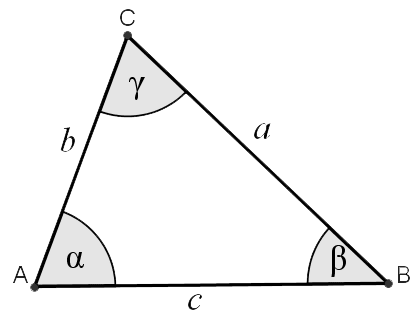
| Law of Sines | Law of Cosines | Law of tangents |
|---|---|---|
| Sine | Cosine | Tangent |
|---|---|---|
| where | ||
| Two sides and included angle | one side and two angles | three sides are given |
|---|---|---|
a)
a)1cm
a)3, 4, 5
b)5, 12, 13 c)6, 7 ,16 d)none
| Type | Angle Condition | Description | Side Relation |
|---|---|---|---|
| Acute | All angles < 90° | Every angle is sharp or narrow | All sides follow a² + b²> c² |
| Obtuse | One angle> 90° | Contains one wide angle | a² + b² < c² |
| Right | One angle = 90° | Contains one perfect right angle | a² + b² = c² (Pythagorean) |
| Oblique | No 90° angle (either acute or obtuse) | A general term for non-right triangles | Covers acute and obtuse |
| where |
13: Inverse Trigonometric Functions
a)
since
a)cannot be calculated
a)5
a)
since
- if asked to express one trigonometric function in terms of other, draw a triangle use that,
| sin | cos | tan |
|---|---|---|
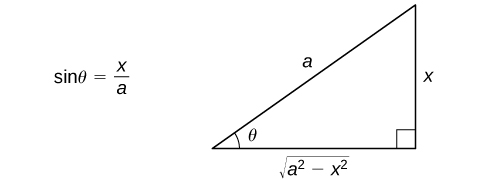 |
 |
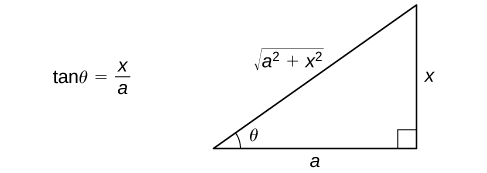 |
| base= |
perp. = |
hypo. = |
a)
a)
Part 2
1: Function & Limits +
-
if
its called involution and give same results for same value of all values of x -
simplify a fractional limit by taking the derivative of numerator and denominator separately, called rule of De l
Hospital $$\begin{align*}&\text{if f(a) and g(a) are equal to zero \quad } \ & \lim_{x \to a} \dfrac{f(x)}{g(x)} =\lim_{x \to a} \dfrac{f'(x)}{g'(x)}\end{align*}$$ -
-
-
-
Vertical asymptotes: in a rational functions
when the equals zero while the does not, if both are zero its a hole -
Domain and Range of
are Range And Domain of its inverse respectively -
Parametric Equation of a Circle: $$ x= a\cos \theta \ y= a\sin \theta$$
-
TODO: definitions on page 5-8
-
Hyperboloc and Inverse hyperbolic on page 7
domain and range
- linear functions: ax+b = 0 have domain and range of R
- functions with
here x can never be negative so, range is and domain (except ) is all real numbers R
- functions with
- in linear and rational functions
, domain is excluding number that makes the function irrational
and range has a shortcut if numerator and denominator have linear polynomial functionsthen exclude ratio of coefficients of x from rangee.g. or then Range = or or
2: Differentiation and Derivatives
- if a third variable is installed, don't use chain rule, simply do
, now differentiate separately the numerator and denominator with respect to the third variable and divide
a)
-
For implicit function:
-
important
-
has - max. value =
- min. value =
- max. value =
-
order of derivative is highest derivative in the equation
has highest order of 3,
degree is the highest power of x, which in this case is 2 -
a function is:
- increasing if
- decreasing if
- increasing if
a)
| name | ||
|---|---|---|
| product rule | ||
| quotience rule | ||
| reciprocal rule | ||
| power rule | ||
| simple | inverse | hyperbolic | |
|---|---|---|---|
| Sin | |||
| Cos | |||
| Tan | |||
| Cot | |||
| Cosec | |||
| Sec |
ANS = 0
a)
a)
Rate of change of circumference of circle =
Circumference =
Area of circle =
- LOOK FOR RELATOON BETWEEN MACLAURAN AND GEOMETRIC SERIES AAAAAAAAAAAAAAAAAAH
3: Integration
- for any integral limit of form
- in
a and b are range of - Integration cancels out derivative:
simply put upper and lower limit:
- if we have
- if upper limit is a variable
and lower limit is a constant
- order: highest derivative in an equation
- degree: power of the term with the highest order
a)
has same derivative and integral
a)
4: Analytical Geometry
-
To determine the unknown point in a parallelogram ABCD, D is equal to sum of its adjacent sides A and C, subtracted by B:
-
a linear equation of two variables represents a line i.e.
- two lines are coinciding if their slopes and x or y intercept are equal
| thing | formula | explainations | ||
|---|---|---|---|---|
| distance | distance between two points | |||
| midpoint | the point in the middle of 2 points | |||
| division of line internally | P is the position vector where of the point |  |
||
| division of line externally | P is the position vector where of the point | |||
| distance between point and line | where |
|||
| slope | the tangent of inclination(θ) | |||
| Centroid of triangle |  |
|||
| in-center of a triangle | from bisector of the angles | 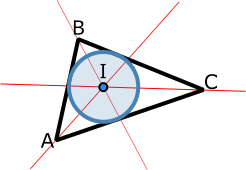 |
||
- slope of horizontal line is
or and of vertical line or undefined - prependicul
- if two lines are prependicular then
if two lines are parallel then - for three collinear points
x_1 & y_1 & 1 \
x_2 & y_2 & 1 \
x_3 & y_3 & 1
\end{matrix} \right| = 0
\text{Area of triangle }= \Delta = \dfrac{1}{2}\begin{vmatrix}x_{1} & y_{1} & 1 \ x_{2} & y_{2} & 1 \ x_{3} & y_{3} & 1 \ \end
\begin{align}
ax_{1} + by_{1} + c> 0;& \quad \text{lies above line}\
ax_{1} + by_{1} + c < 0;& \quad \text{lies below line}\
ax_{1} + by_{1} + c = 0;& \quad \text{lies on the line}\
\end
\begin{align}
a> 0 ; & \quad \text{ above x-axis } \quad | & \quad b> 0 ; \quad \text{ right y-axis } \
a < 0 ; & \quad \text{ below x-axis }\quad | & \quad b < 0 ; \quad \text{ left y-axis }\
a = 0 ; & \quad \text{ on x-axis } \quad \quad |& \quad b = 0 ; \quad \text{ on y-axis }\
\end{align}$$
- if axis
is shifted through then new axis $$\begin{align}
(X,Y) = (x-h,y-k) \
\
\text{or} \quad (x,y) = (X+h,y+k)
\end{align}$$
in other words, a pointshifted through point , becomes - three lines
are concurrent if
- angle betwezen two lines having slopes
, from to going counter clockwise(arrow strikes )
represents two lines through origin, they are
- the angle between them is:
- pair of lines perpendicular to
are given by
5: Linear Inequalities and Programming
- if an equality
or its associated equation ax + bx = 0 which represents the line, if the equations includes then this line is included otherwise its shown as dotted - a function being maximized or minimized is an objective function
- the solution which maximizes or minimizes a function is called an optimal solution
- feasible regions, region restricted to first quadrant
- optimal solution only exists in feasible region
- intersection of two boundary lines is a corner point if its is in feasible region
- four symbols of inequality
- the corner point satisfies both inequalities, and can be obtained by solving the associated equation of both lines
6: Conic Section

- Degenerated conic:
- a point is a degenerated circle or ellipse (plane parallel or at angle to an angle not equal to angle of cone)
- a straight line is a degenerated parabola (plane at angle equal to cone)
- two intersecting lines are a degenerated hyperbola (plane is perpendicular to the cone)
- eccentricity;
is a positive constant, and if
- at maximum, two conic can intersect each other at 4 points, min at 0 points
- determine the conic
if
- any point that lies on a line or conic, satisfies its equation, this core concept is used to solve many mcqs by back solving
circle:
\
&\text{Standard Equation: \quad}r^2=(x-h)^2 + (y-k)^2
\end{align}$$
if in general equation
if values
-
while solving any MCQ, make sure
are equal to -
if radius = 0 then its a point circle
-
no
term (product of x an y) is present in equation of circle -
if radius = 0 then its a point circle
-
if
then circle touches x-axis
ifthen circle touches y-axis
ifthen circle touches both axes
a)X-axis
- no
term (product of x and y) is present in equation of circle - length of a chord
, where d is distance of midpoint of chord from center - circle is a special form of ellipse when minor and major axes are equal
- Position of a point
relative to a circle is done by putting point in equation of circle(standard or general)
- to find the quadrants the circle passes though
1.) find center, this will give one quadrant
2.) find radius, second quadrant will be the one, which is less than radius

- Circle passes through:
all 4 quadrants ifis negative
3 quadrants and origin ifis zero
tangents
- to find tangent to a curve at any point
, replace
- length of tangent of circle from
is done by putting in equation of circle and taking square root
CO-EFFICIENT OFAND MUST BE ONE
from the point P(-1,2)
Parabola:

-
the parabola opens where the term with degree 1 points; x-right, -x-left, y-up, -y-down
-
is called the focal length -
for form
-
line
is tangent on parabola if: -
in any equation:
, the term is the axis -
for any equation of form
solve it by completing square
Ellipse:
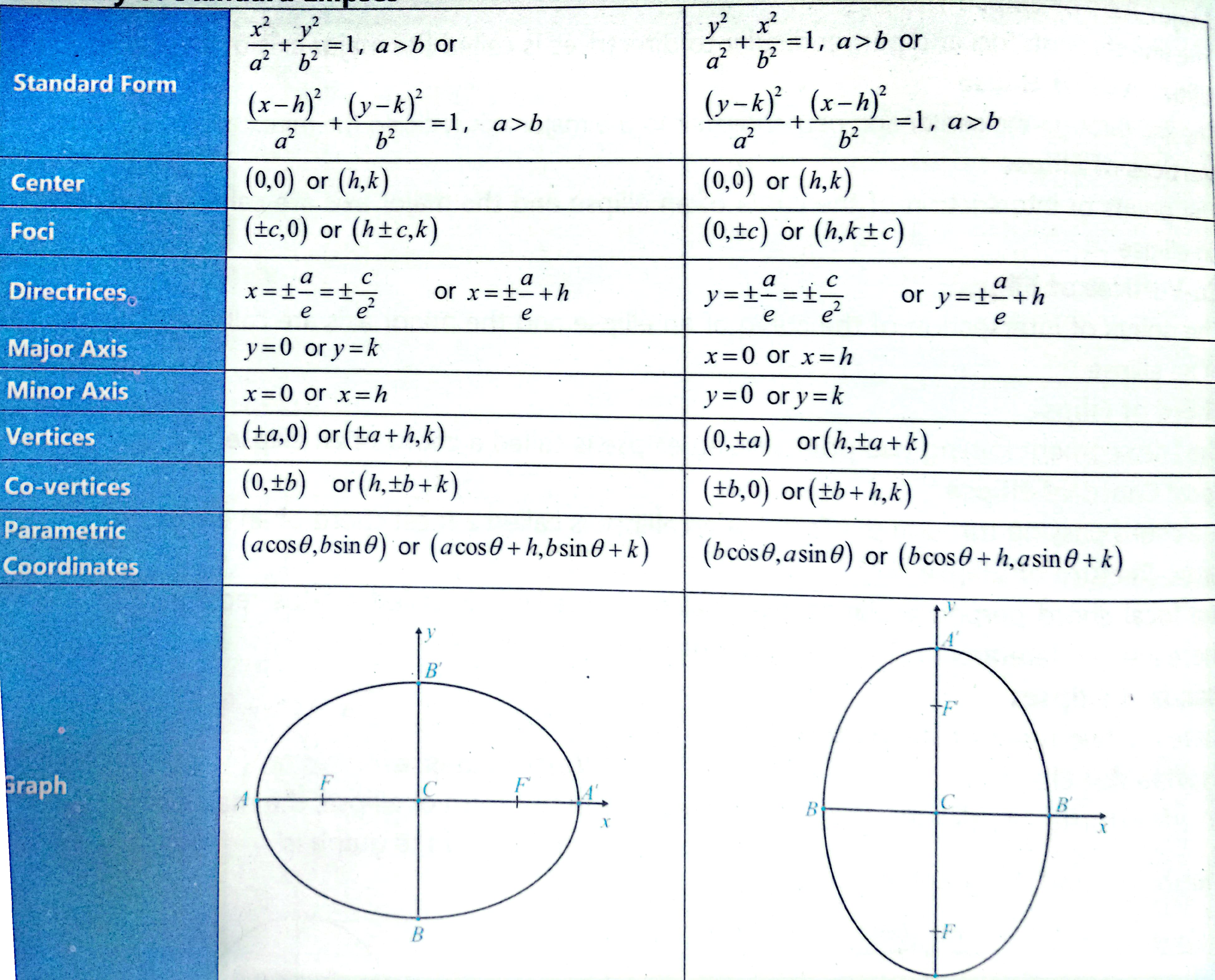
: length of major axis : length of minor axis distance between center and foci: distance between foci - semi major axis means only
, as in half of major axis - eq. directrix: x or y = ± a²/c
- distance b/w directrices: d= 2a²/c
- Area:
- Perimeter≈
- focal parameter: distance between focus and directrix:
- in standard form of ellipse
if certain conditions are met, of A and B, the bigger can be a² and smaller can be b²
the largest circle inside will have radius equal to semi minor axis = b,
Hyperbola:
-
product of distances of foci to any perpendicular is
-
hyperbola is along the axis which is positive in the equation
-
symmetric on both axes
-
if
then its a rectangular hyperbola -
Foci:
-
distance between foci: 2c
-
-
-
Directrices =
-
Length of latus-rectum: =
-
Length of traverse axis(where vertices lie): 2a
-
Length of conjugate axis(where CoVertices lie): 2b
-
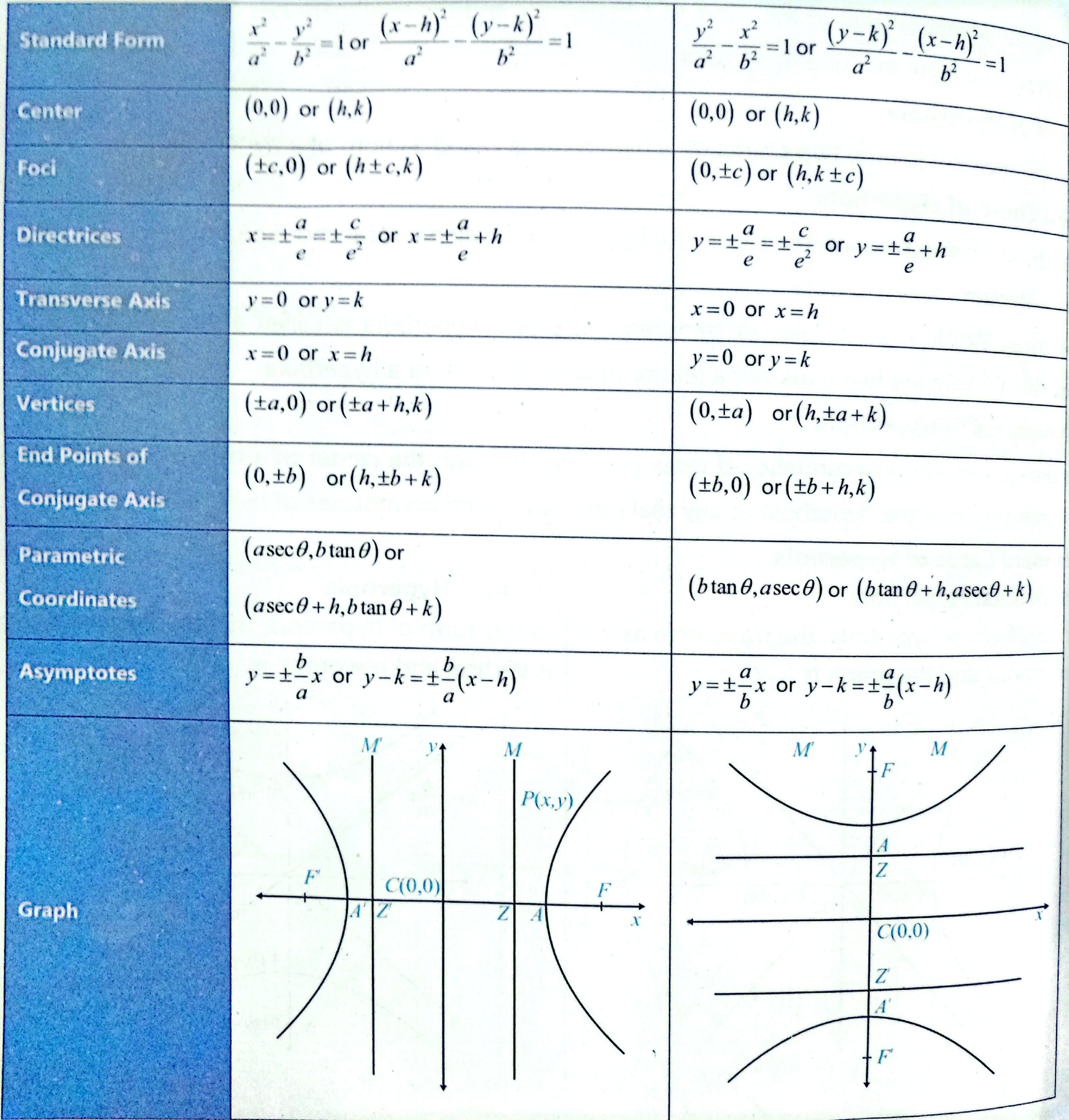
Center = (2,-1)
Vertices(∓(a+h), k) = (∓(3+2),-1)
Co Vertices(∓(b+h), k) = (∓(4+2),-1)
Foci (∓(c+h),k) = (∓(5+2),-1) ;
- for asymptotes simply replace the 1 with 0 and solve for y
a)
- In rectangular hyperbola
where c is a constant - its eccentricity is always
- their asymptotes are perpendicular
7: Vectors
- sum of vectors forming a closed loop is zero
a)(10,10,10)
- for a triangle sum of its sides as vectors is zero $$\underline{u} + \underline{v} + \underline{w} = 0$$
or sum of its any two sides, is equal to the third$$\underline{u} + \underline{v} = \underline{w} $$
a)4
- line segment from origin to point is a position vector
- from point to point is a vector
- if two vectors are perpendicular and you need to find one of their coordinates, set their dot product equal to zero and solve
a)
- projection of B on A where
is the angle b/w them is: = component of B along A =
a)-1
- orthogonal: if two curves are perpendicular
- for any vector, where
are its angles with corresponding axes - For any two parallel vectors
and , the ratios of coefficient of corresponding components are equal
i.e.
a)4
- a vector
is - is
units away from z-axis - is
units away from y-axis - is
units away from x-axis
- is
a)5
-
Direction cosines of a vector are the components of its unit vector
- e.g.
has direction cosines of and
- e.g.
-
Scalar Triple Product:
- its zero if the vectors are co planar
- it gives the volume of the parallelepiped formed by the three vectors.
a)30
a)